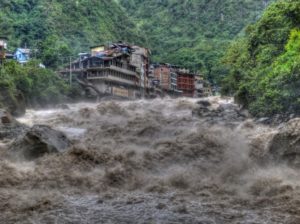Flooding Continues in Peru
 Floods continued to ravage Peru the week of March 27, leaving 90 dead and thousands displaced. Since December 2016, extreme rainfall from an unusually wet El Niño phenomenon has disproportionately affected poor regions of the country and caused an array of health, infrastructure, and economic issues.
Floods continued to ravage Peru the week of March 27, leaving 90 dead and thousands displaced. Since December 2016, extreme rainfall from an unusually wet El Niño phenomenon has disproportionately affected poor regions of the country and caused an array of health, infrastructure, and economic issues.
In 2017, Peru has received 10 times more rainfall than it normally sees during the El Niño event. “We’ve never seen anything like this before” said Jorge Chavez, the general in charge of the government’s response to the crisis.
Hardest hit are the northern and central Andean regions of the country.
The government has declared a state of emergency and scrambled to aid the over 70,000 newly-homeless Peruvians. According to the World Bank’s Niels Holmes Nielson, more than 60 percent of housing in some Latin American countries is informal, and Peru continues to face the consequences of this trend. Urban slums built along rivers and hillsides have seen the most damage due to poorly-constructed, makeshift housing, leaving the impoverished residents without homes.
Furthermore, flooding has raised concerns over mosquito-borne diseases with new, dangerous quantities of standing water. Government responders have fumigated over 200,000 homes in efforts to mitigate the risk of diseases such as dengue, zika, and chikungunya.
The event has called attention to Peru’s failing infrastructure as power and running water have become increasingly scarce. Storm drains have clogged, and bridges have collapsed, making transport difficult. Such challenges have impeded economic activity.
"We need more and better bridges, we need highways and cities with drainage systems," said Chavez. "We can't count on nature being predictable."
Experts expect the flooding to continue through April 2017.
